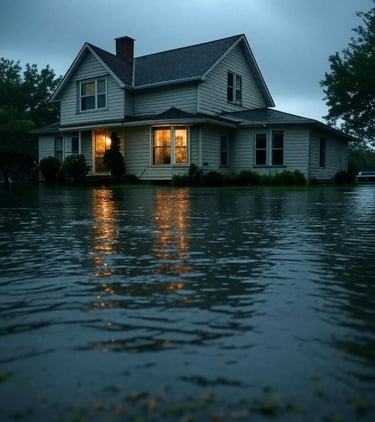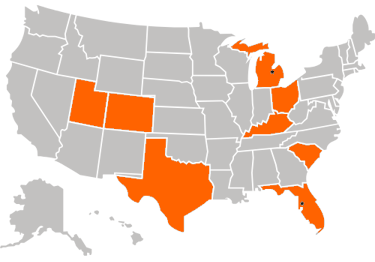Understanding the Importance of Flood Insurance: A Comprehensive Guide
Floods are one of the most common and costly natural disasters in the United States; affecting millions of homeowners, renters, and businesses each year. Despite this, many people remain unaware of the critical role flood insurance plays in protecting their financial security. Unlike standard home insurance, flood insurance is a separate policy designed specifically to cover flood-related damages. This blog post explores why flood insurance is essential, how it differs from home insurance, the role of the Federal Emergency Management Agency (FEMA) in regulating it, and how FEMA creates flood risk maps and zoning rules. We’ll also discuss how Spearpoint can help individuals and businesses navigate their flood insurance needs.


Why Flood Insurance Matters
Floods can occur anywhere, not just near rivers or coastlines. Heavy rains, poor drainage, or even nearby construction can lead to flooding, causing significant damage to properties. According to FEMA, over 40% of National Flood Insurance Program (NFIP) claims come from areas outside high-risk flood zones, proving that no property is entirely safe from flood risk. From 2016 to 2021, NFIP policyholders received an average of $68,000 in claim payments, which do not need to be repaid, highlighting the financial lifeline flood insurance provides. Without it, property owners could face devastating out-of-pocket costs to repair or rebuild after a flood.
Flood insurance offers peace of mind by helping policyholders recover faster. It covers damages to buildings and personal property caused by flooding, such as structural repairs, replacement of belongings, and cleanup costs. For businesses, it can protect inventory, equipment, and operational continuity. Given that just one inch of water can cause thousands of dollars in damage, flood insurance is a critical investment for safeguarding your home or business.
Flood Insurance vs. Home Insurance: Key Differences
A common misconception is that standard homeowners’ insurance covers flood damage. In reality, most home insurance policies explicitly exclude coverage for losses caused by flooding. Home insurance typically covers damages from events like fire, theft, or windstorms, but flooding—defined by FEMA as the partial or complete inundation of two or more acres of normally dry land or two or more properties—requires a separate policy.
Flood insurance is primarily offered through the NFIP, managed by FEMA, and is available to homeowners, renters, and businesses in the 22,600 communities participating in the program. If you live in a high-risk flood area and have a mortgage from a government-backed lender, federal law mandates flood insurance coverage. However, FEMA strongly recommends flood insurance even for properties in moderate- or low-risk zones, as about 25% of NFIP claims come from these areas.
Unlike home insurance, flood insurance has a 30-day waiting period before coverage takes effect, unless it’s required by a lender or tied to a community flood map change. This underscores the importance of planning ahead to ensure protection before a flood strikes.
FEMA’s Role in Regulating Flood Insurance
The NFIP, established by the National Flood Insurance Act of 1968, is administered by FEMA in partnership with over 47 private insurance companies through the Write-Your-Own (WYO) program. FEMA sets the standards, underwrites policies, and ensures the program’s fiscal soundness, while private insurers sell and service NFIP policies. The NFIP provides nearly $1.3 trillion in coverage to 4.7 million policyholders nationwide, making it the largest single-line flood insurance program in the U.S.
FEMA regulates flood insurance through a series of laws and reforms, including:
Flood Disaster Protection Act of 1973: Mandates flood insurance for properties in high-risk flood areas with federally backed mortgages.
Biggert-Waters Flood Insurance Reform Act of 2012: Transitioned the NFIP from subsidized rates to actuarial rates that reflect true flood risk, though some provisions were later modified to address affordability concerns.
Homeowner Flood Insurance Affordability Act of 2014 (HFIAA): Restored grandfathered rates, limited certain rate increases, and introduced surcharges ($25 for primary residences, $250 for non-primary residences and non-residential buildings) to balance affordability and fiscal responsibility.
FEMA’s Risk Rating 2.0, fully implemented by April 2023, modernized the NFIP’s pricing methodology. Unlike the older system, which relied heavily on Flood Insurance Rate Maps (FIRMs) and property elevation, Risk Rating 2.0 uses advanced technology, private-sector data, and catastrophe models to set rates based on a property’s unique flood risk, including rebuilding costs. This approach ensures fairer, more equitable premiums. Discounts are still available for pre-FIRM properties, newly mapped properties, and communities participating in the Community Rating System (CRS), which rewards proactive floodplain management with premium reductions of 5% to 45%.
FEMA’s Flood Insurance Rate Maps and Zoning Rules
FEMA’s Flood Insurance Rate Maps (FIRMs) are critical tools for assessing flood risk and determining insurance requirements. These maps identify flood zones based on the likelihood of flooding, with a focus on the Special Flood Hazard Area (SFHA), also known as the 1% annual chance floodplain (or 100-year floodplain). Properties in SFHAs, designated as zones starting with “A” or “V,” face a 26% chance of flooding over a 30-year mortgage and require mandatory flood insurance for federally backed loans.
How FEMA Creates FIRMs
FEMA develops FIRMs through Flood Insurance Studies, which analyze:
Canal and stream flows
Storm tides
Hydrologic and hydraulic data
Rainfall and topographic surveys
These studies help map flood zones, floodplain boundaries, and Base Flood Elevations (BFEs), which indicate the expected water height during a 1% annual chance flood. FEMA collaborates with local communities, regional agencies, and technical partners to update maps periodically, ensuring they reflect current flood risks. For example, coastal flood risk studies cover 100% of the populated U.S. coastline. The FEMA Flood Map Service Center (MSC) provides public access to these maps, allowing property owners to check their flood zone by entering their address.
Flood Zone Designations
FEMA’s flood zones include:
High-Risk Zones (A, V): Areas with a 1% annual chance of flooding, including AE (with BFEs), AO (shallow flooding), and VE (coastal areas with wave action). Mandatory flood insurance applies in these zones for federally backed mortgages.
Moderate-Risk Zones (B, X shaded): Areas between the 1% and 0.2% annual chance floodplains. Flood insurance is recommended but not required.
Low-Risk Zones (C, X unshaded): Areas with minimal flood risk, though flooding is still possible. Preferred Risk Policies (PRPs) offer low-cost coverage in these zones.
Zoning Rules and Floodplain Management
Communities participating in the NFIP must adopt floodplain management ordinances that meet or exceed FEMA’s minimum standards. These rules regulate development in SFHAs to minimize flood damage, such as requiring new construction to be elevated above the BFE or anchored to prevent flotation. For example, in V Zones, the use of fill for structural support is prohibited. Communities can also participate in the CRS to earn premium discounts by implementing stricter floodplain management practices, such as preserving natural floodplains or improving drainage systems.
If a property’s flood zone changes due to updated FIRMs, owners can use options like the Newly Mapped Procedure or Grandfathering to keep costs down. A Letter of Map Amendment (LOMA) or Letter of Map Revision Based on Fill (LOMR-F) can also be submitted to FEMA to revise a property’s flood zone designation if new data shows lower risk.
How Spearpoint Helps Navigate Flood Insurance Needs
Navigating the complexities of flood insurance can be daunting, from understanding FEMA’s zoning rules to securing affordable coverage. Spearpoint, a trusted partner in risk management, specializes in helping individuals and businesses make informed decisions about flood insurance. Here’s how Spearpoint can assist:
Personalized Risk Assessments: Spearpoint works with clients to evaluate their property’s flood risk using FEMA’s FIRMs and other advanced tools, ensuring they understand their specific exposure, even in moderate- or low-risk zones.
Policy Guidance: Spearpoint connects clients with NFIP-approved insurance agents to secure policies tailored to their needs, whether for homes, rentals, or businesses. They also help explore cost-saving options like PRPs or CRS discounts.
Map Revision Support: If a property is incorrectly zoned or flood risk changes, Spearpoint assists with obtaining LOMAs or LOMR-Fs, potentially reducing insurance costs by moving properties to lower-risk zones.
Mitigation Strategies: Spearpoint advises on property modifications, such as elevating utilities or raising structures above the BFE, to lower premiums and enhance flood resilience. They also guide clients on leveraging FEMA’s mitigation grants.
Business Continuity Planning: For businesses, Spearpoint develops comprehensive flood risk management, ensuring coverage for inventory, equipment, and operational losses while navigating NFIP regulations.
By partnering with Spearpoint, clients gain access to expert guidance, streamlined processes, and strategies to minimize costs while maximizing protection. Their deep understanding of FEMA’s regulations and mapping processes ensures that individuals and businesses are well-equipped to handle flood risks.
Conclusion: Protect Your Future with Flood Insurance
Flood insurance is a vital tool for safeguarding your home or business from the unpredictable and costly impacts of flooding. Separate from home insurance, it provides targeted coverage that can mean the difference between financial recovery and ruin. FEMA’s NFIP, supported by robust regulations and detailed flood mapping, ensures that property owners have access to reliable coverage. By understanding your flood zone and working with experts like Spearpoint, you can navigate the complexities of flood insurance with confidence, securing peace of mind no matter where you live or work.
To learn more about your flood risk or get a quote, contact a Spearpoint representative today. Don’t wait until it’s too late—floods can happen anywhere, and preparation is key.
Sources used in this post:
FEMA: Flood Insurance
FEMA: Laws and Regulations
FEMA: Flood Insurance Rules and Legislation
FEMA: Flood Zones and Maps
FEMA: Know Your Flood Risk
FEMA: NFIP’s Pricing Approach
FEMA: Flood Maps
FEMA: Community Members' Guide to Initiating Map Revisions
FEMA: Floodplain Management




